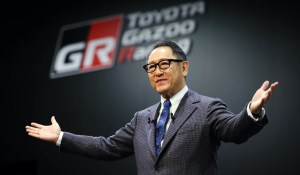Japanese automakers are risking a repeat of the decline of Detroit’s big three automakers – Chrysler, Ford and General Motors – because of their resistance to electric vehicles (EVs). Nearly 40% of Americans who bought Teslas had switched from Japanese brands, primarily from Toyota and Honda.
At a time when 25% of new car sales in China are EVs or plug-in hybrids, a lack of EVs is costing Japanese brands sizeable sales. In a market weakened by Covid-19, Japanese brands tumbled the most — by a third from the year before — compared to just 9% for US and European brands.
After surpassing Germany to become the world’s second-largest auto exporter in 2022, China is on track to surpass Japan relatively soon. Given the long-term decline in car sales within Japan — with 2022 sales 26% below that of 1996 — a loss of market share in exports is a serious hit.
The export problem is also largely because of EVs, which now account for half of all Chinese automobile exports. Most of these are made by foreign brands, usually through joint ventures with domestic partners.
In the first half of 2022, Western Europe accounted for around 34% of China’s total car exports. China’s share of the European EV market is predicted to rise from 5% in 2022 to 15% as early as 2025.
Japanese automakers are finally waking up and making some changes. In December 2021, Toyota announced its goal of producing 3.5 million battery EVs by 2030, up from the previous goal of 2 million.
The new goal equals 35% of the company’s 2022 global sales. Honda now targets 2 million battery EVs by 2030, equal to half of current sales. Even with these changes, Japan significantly lags behind other wealthy countries.

Unfortunately, these companies are still hedging their bets by spending billions of dollars on cars that are either losing popularity — such as hybrids — or were never popular, like plug-in hybrids and the truly futile hydrogen fuel cell vehicle.
In 2022, global sales of battery EVs and plug-in hybrids combined overtook traditional hybrids, but sales of battery EVs were three times as high as plug-in hybrids.
In January 2023, the plug-in hybrid share in the United States was still a measly 1.2% while the battery EV share hit 6.2% and will keep rising. Bloomberg New Energy Finance believes that global gasoline car sales peaked in 2017 and will never recover.
Yet both Japan’s government and automakers are still obsessed with the romance of hydrogen fuel cell cars. Tokyo allots more subsidies to fuel cell cars than to EVs. The Mirai, Toyota’s fuel cell car, was introduced in 2015 but has only sold 22,000 units worldwide since then.
The irony is that Chinese brands seem to be repeating exactly what Japanese automakers did to Detroit’s big three, and for the same reason — a shift in technology and market conditions that dominant oligopolists fail to adapt to.
Until the two oil price shocks of the 1970s, Detroit’s big three’s market share held up at 85%. Then, oil prices suddenly rose at the same time as the government’s imposition of stricter pollution controls.
Japanese brands seized the opportunity to offer smaller, more reliable, fuel-efficient and less polluting cars, while Detroit resisted improving fuel efficiency and lowering emissions.
Japanese automakers also put computer chips into their cars before others. Within less than a decade of the oil price shocks, Japan became the world’s biggest auto exporter, prompting protectionist measures in both the United States and Europe.
Today, Detroit’s combined market share in the United States is down to just 40%, and Toyota has become the world’s biggest automaker, a status that General Motors previously enjoyed for 77 years.
Just as success blinded Detroit to a change in the times, it has done the same with Japanese brands. Just-retired Toyota chieftain Akio Toyoda dismissed EVs as overhyped and repeated the myth that shifting to EVs would actually increase carbon emissions.

The latter is only the case where coal generates an unusually high share of electricity — globally, EVs emit 30% fewer emissions than gasoline cars and the advantage keeps increasing as the use of renewables grows.
Toyoda’s successor, Koji Sato, told the press, “we will thoroughly implement electrification, which we can do immediately.” But many analysts remain skeptical of his commitment.
Japanese automakers seem to assume that they can still focus on hybrids and catch up if the time comes to focus on EVs. But it is not clear whether catchup will be easy, partly due to internal corporate culture.
It is common for managers and engineers at highly successful companies to become too attached to the business model and technology that originally brought them success. Insiders say that many Japanese executives hesitate to stray too far from the policies of the seniors who promoted them.
It is not impossible for Toyota, Honda and other Japanese automakers to change course and avoid a plunge in market share. But time is not on their side.
Richard Katz is Senior Fellow at the Carnegie Council for Ethics in International Affairs. This is an adapted version of a piece that originally appeared here on Japan Economy Watch.
This article was originally published by East Asia Forum and is republished under a Creative Commons license.

